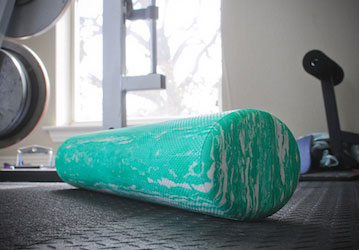Foam rolling can help increase your range of motion (that is, how much your muscles and joints can move) and reduce muscle soreness that results from working out too hard or too long. So how does it work? More research is needed to understand its full effects, but Golgi tendon organs—specialized muscle nerve endings—are sensitive to changes in muscle tension. When you roll over them, the muscles relax. Here are some tips for effective foam rolling:
- Don’t foam roll over newly injured areas.
- If you’re just starting out, you might want to choose a lower-density foam roller. Higher-density foam rollers will provide more pressure.
- Roll to find tight spots in your muscles and then hold your weight over those areas, or continuously roll over a muscle to loosen it.
- Gradually increase the amount of time you roll over each muscle. If you’re just starting, foam roll 1–2 minutes per muscle group.
- Focus on large muscle groups such as your quads and upper back.
Check out HPRC’s how-to videos on foam rolling calves, hamstrings, glutes, and more. Roll on!
